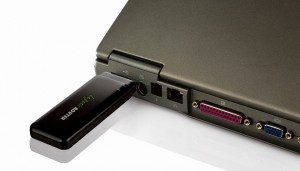The Internet of Things (IoT) represents diverse technologies and usage that enables both unprecedented opportunities and risks for businesses. The key to managing the risks while fully capitalizing on the opportunities is an IoT architecture strategy, according to Gartner, Inc.
“Enterprise architects have a great opportunity to position themselves at the heart of digital businesses,” said Mike Walker, research director at Gartner. “This could take the form of establishing a business competency center that explores how the IoT can create innovative breakthroughs for the organization’s business models, products and services through rapid experimentation.”
Mr. Walker identified several trends that make the IoT particularly relevant to enterprise architecture (EA) as a discipline, which aims to proactively and holistically lead a business towards a specific strategic outcome:
Information of everything. This enables detailed insight into what customers want, and how to connect their needs with the journey planned by an organization for its customers.
Shift from the “thing” to composition. While individual “things” are perhaps not incredibly interesting, using their connectivity to group them together to measure certain data, or to form new business models and uses, creates almost unlimited potential.
Convergence. Smart, connected technologies don’t just bring together “things” they link and combine people, places, and information: creating new opportunities.
Next-level business. The IoT will intrude on established procedures by revealing better ways to measure and operate the organization through new and powerful analytics.
“In establishing a business competency center, enterprise architects need to determine the potential impact, both positive and negative, of IoT technologies and then create actionable deliverables that can define which business opportunities should be pursued as result,” said Mr. Walker. “The first step is bringing together various business unit and IT leaders to explore how the IoT can impact their respective business domains, and agree on actionable business scenarios that will require deep collaboration between them.”
Aside from the many opportunities that the IoT will bring to every business, the sheer volume of information being collected will create risks for legal, regulatory and reputational exposure. The role of the enterprise architect is not only to create new ideas and scenarios, but to properly assess the impact in terms of what information will be generated, what the most important information is and how it can be protected, if necessary.
“Organizations must understand the profound impact new sources of information will have” said Mr. Walker. “Enterprise architects are best positioned to discuss and enable the most lucrative opportunities in partnership with business unit and IT leaders. At the same time, they must work with chief data officers and security officers to structure this data in a way that mitigates the worst risks of pursuing these opportunities.”
Gartner analysts will explore many disruptive technologies, including the IoT, that enterprise architects must consider in their planning at the Gartner Enterprise Architecture Summit 2015 in London, U.K. and Grapevine, Texas. You can follow updates from both Summits and join the conversation on Twitter using the hashtag #GartnerEA.
More detailed analysis is available in the Gartner report “Leveraging Enterprise Architecture to Enable Business Value With IoT Innovations Today.”












